Feeling lost and confused about gout? Let’s break down the causes, symptoms, diagnosis, treatment options, risk factors and the foods you need to avoid.
Learn how you can manage your gout today!
Disclaimer
The information provided in this article is for general information only. It should not be used as a substitute for professional medical advice, diagnosis, or treatment. Please consult your healthcare provider if you have any questions related to your health.
This article has no affiliate links and is not sponsored by any company or organization.
1. What is Gout
Gout is a type of inflammatory arthritis (joint disease). It happens when your body has too much uric acid in the bloodstream. Your body makes uric acid when it breaks down purines [1], a natural substance found in the body and in some foods. If your body produces too much uric acid or the kidneys don’t filter it out properly, sharp, needle-like crystals form in your joints or around them, causing severe pain. Gout can make walking and standing very painful.
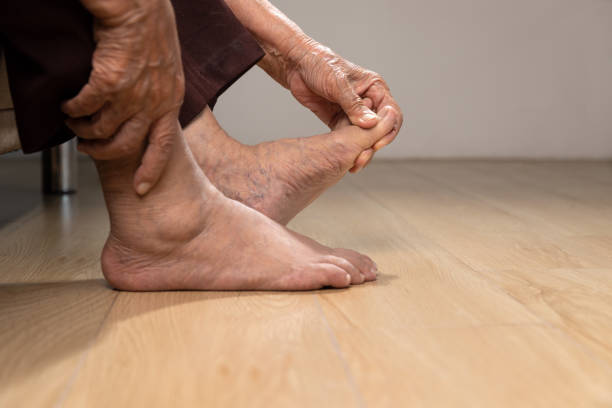
Credit: iStock
Gout flares often begin in your big toe, or a lower limb. However, it can manifest in other parts of the body as well, including other joints, bursae (tiny slippery bags of fluid between bones and other soft parts of the body facilitating gliding motions when we move), tendon sheaths [2] (tube-like protective coverings for tendons) and kidneys [3].
2. Causes and Risk Factors
Gout is caused by elevated levels of uric acid in your blood. The most common cause is an overproduction of uric acid or an inability to excrete it properly. This high uric acid level in your blood is called hyperuricemia, often a precursor to gout.
While hyperuricemia is a risk factor for gout, it is not the only cause. Gout can also be caused by several other factors [4], including:
- Age: Gout is more common in older people. Children are not usually affected by it
- Gender: Men are four times more likely to get gout than women under 65. Women can get gout but rarely before menopause [5]
- Weight: Gout expert Hyon Choi, MD, a professor of medicine and director of clinical epidemiology in rheumatology, Boston, says that the chance of getting gout goes up by a factor of ten or more if you are overweight or obese. You’re also more likely to get gout ten years earlier than someone of a healthy weight. However, being overweight or obese cannot directly cause the condition [6]
- Genetics: If someone in your family has gout, you may be more likely to get it too.
- Lead exposure: Studies have indicated a possible connection between long-term lead exposure and elevated risk of developing gout.
- Medications: Some medicines can make uric acid levels go up. These medicines include diuretics, aspirin, niacin (a type of vitamin), and a drug called cyclosporine. Cyclosporine helps people with organ transplants and some diseases [7]
Some health conditions may increase your risk of developing gout as well [8], including:
- Chronic kidney problems, making it hard for the body to get rid of waste. This can cause uric acid levels to rise
- High blood pressure
- Diabetes
- Abnormally high levels of cholesterol
- Individuals with psoriasis, hemolytic anaemia, or some cancers are more likely to develop gout
- Kelley-Seegmiller syndrome or Lesch-Nyhan syndrome, two rare conditions in which your body either does not have the enzyme that regulates urate levels or does not have enough of that enzyme
3. Symptoms
Gout attacks can be extremely painful and debilitating. It can happen suddenly, often overnight.
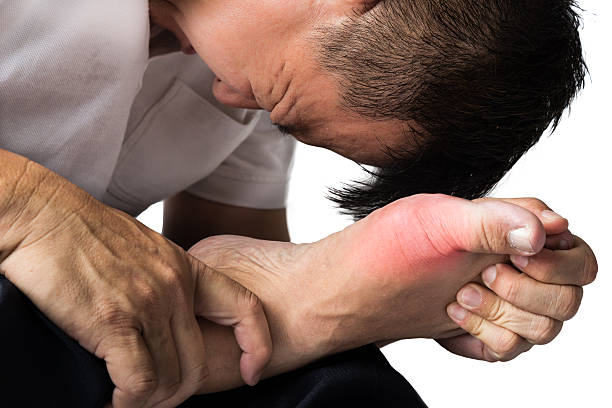
Credit: iStock
3.1 Symptoms of Acute Gout
The symptoms during an acute gout attack may include [9, 10]:
- Excruciating joint pain that might appear suddenly and usually starts at night
- Swelling, extreme tenderness, and redness of the affected joints, particularly in the big toe. The area could be so sensitive that even the touch of a bed sheet could be excruciatingly painful
- Persistent or intermittent joint pain lasting several hours to days
- Feeling warm or the sensation that the place is “on fire”
- Limited range of motion due to the pain and inflammation
- Chills
- Fever
- Fatigue
3.2 Symptoms of Chronic Gout
For some people, gout can be a progressive condition. They may develop chronic gout. This can lead to more-severe conditions [11], such as:
- Recurring episodes of acute gout attacks, with joint pain, swelling and stiffness, lasting for days or weeks. If left untreated, the inflammation causes lasting damage to bone and cartilage
- Development of tophi, visible lumps made up of uric acid crystals under the skin near affected joints. Tophi can develop in areas like your hands, fingers, feet, elbows or at the backs of your ankles
- Joint damage and deformity. Chronic inflammation and tophi can lead to permanent joint damage and deformation over time
- Pain and swelling in multiple joints at the same time
- Depression due to chronic pain and sometimes constant pain
Some chronic gout sufferers may be more susceptible to other complications, particularly those involving the heart and kidneys. Some common complications [12] may include the following:
- Damage to organs such as kidneys due to deposition of uric acid crystals forming stones
- Hypertension (high blood pressure)
- Myocardial Infarction (heart attack)
- Congestive heart failure
- Obesity
- Diabetes
4. Diagnosis
The first step in diagnosing gout is taking your detailed medical and family history. S/he may ask questions about any previous episodes of joint pain or swelling, whether the painful joints get red, and whether the inflammation happens in one or many joints at a time. S/he will also perform a physical examination to look for signs of inflammation or tenderness in affected joints.
Once these initial steps have been completed, your healthcare provider may order laboratory tests to make a definitive diagnosis of gout. There are several tests [13] that can aid in diagnosing gout. These include:
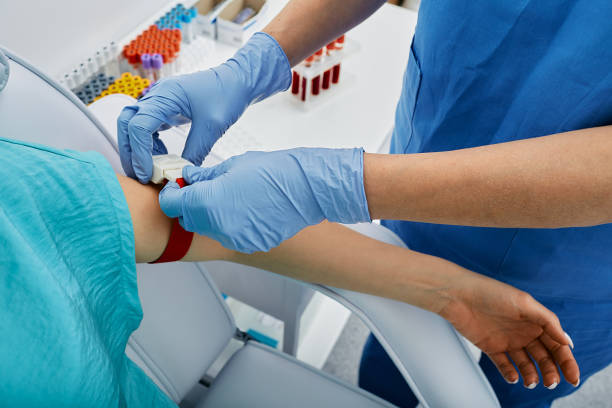
Credit: iStock
- Blood tests: Blood tests can measure the uric acid level in the blood. However, even though high uric acid levels can indicate gout, some people with high uric acid levels never develop gout. Then again, others may develop gout even with normal uric acid levels
- Therefore, blood tests are used along with other diagnostic tests, and are not the only tool for a gout diagnosis
- Joint fluid analysis: This test involves using a needle to take a small sample of fluid from the affected joint. The fluid is then examined under a microscope to look for uric acid crystals. The presence of these crystals is definitive proof of gout
- X-rays: X-rays can be used to check for joint damage or damage caused by other conditions that may be causing joint pain
- Ultrasound: This test uses sound waves to create images inside the body. Urate crystals in joints or tophi are found using these sound waves
- Dual-energy computerized tomography (DECT) [14]: DECT is a relatively new imaging technique with much potential for diagnosing gout. This test is a non-surgical alternative to withdrawing fluid from a joint.
However, your doctor needs to consider other possible causes, such as pseudogout [15], when making their diagnosis, as these conditions share many similarities with gout but require different treatments.
5. Cure for Gout
Unfortunately, gout currently has no known cure. However, it is one of the most manageable types of arthritis. Many people can avoid gout flare-ups, minimize the intensity of their symptoms, and even completely recover from the disease with early diagnosis, treatment, and lifestyle changes.
6. Treatment and Management
It’s important to note that while there is no cure for gout, treatments are available to help reduce pain and decrease the risk of long-term complications.
6.1 Medications for Gout
Medication [16] is often the first line of treatment for gout. It can help reduce joint swelling and pain quickly caused by a buildup of uric acid crystals in your joints. Below medications are usually prescribed to help manage your symptoms:
- Nonsteroidal anti-inflammatory drugs (NSAIDs): NSAIDs, namely, ibuprofen, naproxen sodium, indomethacin, and celecoxib.
- Colchicine: Colcrys, Gloperba, Mitigare are some of the brand names used for this generic drug colchicine
- Corticosteroids are available in pill form or may be injected into your joint
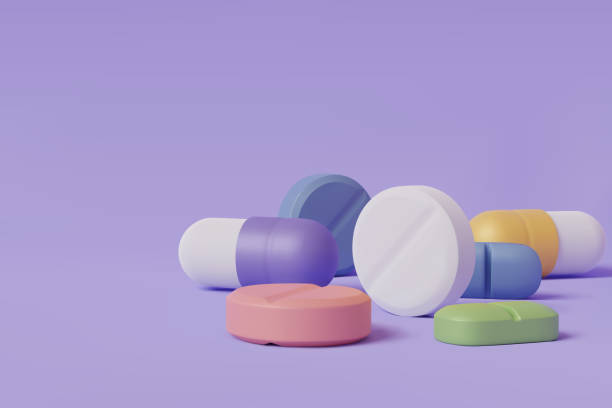
Credit: iStock
There are other types of medicines [17] which may be prescribed to help lower uric acid levels. The most common ones are as follows:
- Allopurinol
- Febuxostat
- Pegloticase
- Probenecid
Some of the medicines mentioned in the above list can also be bought over the counter. However, discussing these medicines with your healthcare provider before you self-prescribe them to manage your gout symptoms would be best. Your healthcare provider will be able to guide you correctly about their various side effects and suitability, keeping in mind your symptoms, age, and any other health issues you might have.
6.2 Foods to Avoid
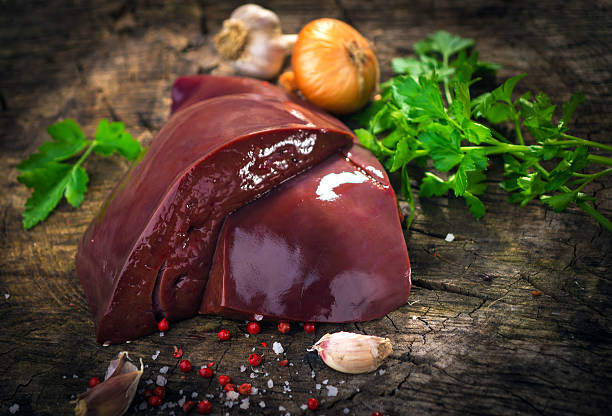
Credit: iStock

For gout-suffers, managing their diet is crucial in preventing painful flare-ups. It’s important to limit foods high in purines as over-consumption of these foods may cause the accumulation of uric acid in your body, leading to a gout attack.
Purines are found in many foods we commonly eat. However, not all high-purine foods should be eliminated from your diet. Moderation and portion control are key. Some high-purine foods [18] are listed below, which should be avoided or eaten in moderation.
- Organ meats: Liver, kidney, heart, and other organ meats are high in purines
- Seafood: Certain fishes like sardines, herring, anchovies, tuna, and shellfish like crabs, lobsters, and shrimp
- Red and processed meats: Beef, pork, lamb, veal, and other red meat contain purines. Processed meats like bacon, cold cuts, and hot dogs
- Alcoholic beverages: Beer, wine, and liquor
- Sugary drinks and treats: Soda, fruit juices with added sugar, energy drinks, sweetened dairy products such as flavoured milk or yoghurt, candy, ice cream, syrups, jams and jellies
- Refined carbohydrates: Pasta, white bread, pastries, and cakes

Credit: Stock
While avoiding or limiting consuming foods high in purines is important, having a well-balanced diet with plenty of vegetables and antioxidant-rich foods can also help reduce the risk of developing gout.
Foods that contain essential fatty acids, such as salmon or walnuts, are thought to be beneficial for reducing inflammation associated with joint pain. Also, drinking plenty of water helps keep uric acid levels low, further lowering gout risk.
6.3 Exercise and Weight Loss
Regular exercise and maintaining a healthy weight can also help reduce pain levels associated with gout; low-impact activities such as walking are ideal for people with gout as they don’t put too much strain on the joints affected by arthritis.

Credit: Freepik
Several studies have found a relationship between obesity and gout. If your BMI goes down 5%, you have a 39% lower chance of getting gout. But if your BMI goes up 5%, you have a 60% higher risk of getting gout.
The American College of Rheumatology recommends that people who have gout and are overweight or obese should try to lose weight. This will help them manage their gout better and stop flare-ups from happening [19].
Making continuous healthier choices in conjunction with any medications prescribed by your healthcare provider is key to effectively managing gout.
7. Take-home Message
If left untreated, acute gout can develop into a chronic condition leading to long-term joint damage and disability. One of the most significant implications of untreated gout is kidney damage. The uric acid crystals can accumulate in the kidneys, forming stones and eventually causing irreversible damage. It’s important to consult with your healthcare provider if you are experiencing gout symptoms.
Studies have also shown that individuals with untreated gout have a higher risk of developing conditions such as diabetes mellitus, cardiovascular disease, and hypertension. It is important to seek medical attention as soon as possible if you experience any symptoms of an acute gout attack, and to follow the doctor’s advice for a successful treatment plan.
You can manage your gout and improve your quality of life by making certain lifestyle changes, such as eating a healthy diet, avoiding high-purine foods, limiting alcohol intake, and getting regular physical activity. Regular visits to the doctor are important for staying on top of treatment plans.
Further Reading
- Everyday Health. Purine-Rich Foods and Gout. Accessed Jul 15, 2023.
https://www.everydayhealth.com
/rheumatic-diseases/purine-rich-foods-and-gout.aspx
2. National Library of Medicine. National Centre for Biotechnology Information. What are tendons and tendon sheaths? Created: July 26, 2018; Next update: 2021. Accessed Apr 18, 2023. https://www.ncbi.nlm.nih.gov/books/
- nd%20freely%20through%20them.
- National Institute of Arthritis and Musculoskeletal and Skin Diseases. Gout. Last Reviewed: February 2020. Accessed Apr 18, 2023. https://www.niams.nih.gov/health-topics/gout
- Medicinal News Today. What to know about gout in the big toe. Last medically reviewed on March 10, 2023. Accessed Apr 18, 2023. https://www.niams.nih.gov/health-topics/gout
- National Library of Medicine. National Centre for Biotechnology Information. “Clinical features of women with gout arthritis.” A systematic review. Published online 2010 Jan 19. doi: 10.1007/s10067-009-1362-1. https://www.ncbi.nlm.nih.gov/pmc
- /articles/PMC2860089/#:~
:text=Clinically%2C%20gout%20is%
\20often%20considered,manifest%
20in%20the%20postmenopausal%20period
- Arthritis Foundation. How Fat Affects Gout. Accessed Apr 18, 2023. https://www.arthritis.org/health-wellness/about-arthritis/related-conditions/other-diseases/how-fat-affects-gout
- National Institute of Arthritis and Musculoskeletal and Skin Diseases. Gout. Last Reviewed: February 2020. Accessed Apr 18, 2023. https://www.niams.nih.gov/health-topics/gout
- Medicinal News Today. What to know about gout in the big toe. Last medically reviewed on March 10, 2023. Accessed Apr 18, 2023. https://www.niams.nih.gov/health-topics/gout
- Cleveland Clinic . Gout. Last reviewed by a Cleveland Clinic medical professional on 02/19/2023. Accessed Apr 18, 2023. https://my.clevelandclinic.org/
Johns Hopkins Medicine. Gout. Accessed Apr 18, 2023. https://www.hopkinsmedicine.org
/health/conditions-and-diseases/gout
Signs Your Gout Is Getting Worse. Written by WebMD Editorial Contributors. Medically Reviewed by Jennifer Robinson, MD on August 29, 2022. Accessed Apr 18, 2023. https://www.webmd.com/arthritis/gout-severe
National Institute of Arthritis and Musculoskeletal and Skin Diseases. Gout. Last Reviewed: February 2020. Accessed Apr 18, 2023. https://www.niams.nih.gov/\
Mayo Clinic. Gout. By Mayo Clinic Staff. Accessed Apr 18, 2023. https://www.mayoclinic.org/diseases-conditions/gout/diagnosis-treatment/drc-20372903
National Library of Medicine. National Centre for Biotechnology Information. Role of Dual Energy Computed Tomography Imaging in the Diagnosis of Gout. Monitoring Editor: Alexander Muacevic and John R Adler. Published online 2017 Jan 20. doi: 10.7759/cureus.985. Accessed Apr 18, 2023. https://www.ncbi.nlm.nih.gov/
pmc/articles/PMC5318147/#:~:text=Dual%
20energy%20computed%20tomography%20
Mayo Clinic. Pseudogout. By Mayo Clinic Staff. Accessed Apr 18, 2023. https://www.mayoclinic.org/diseases-conditions/pseudogout/symptoms-causes/syc-20376983#:~:text=
ut,pyrophosphate%20deposition%
Mayo Clinic. Gout. By Mayo Clinic Staff. Accessed Apr 18, 2023. https://www.mayoclinic.org/diseases-conditions/gout/diagnosis-treatment/drc-20372903
Cleveland Clinic . Gout. Last reviewed by a Cleveland Clinic medical professional on 02/19/2023. Accessed Apr 18, 2023. https://my.clevelandclinic.org/
Gout and Weight Loss: What to Know. Katey Davidson, MScFN, RD, CPT. September 6, 2022. Accessed Apr 18, 2023. https://www.healthline.com/health





